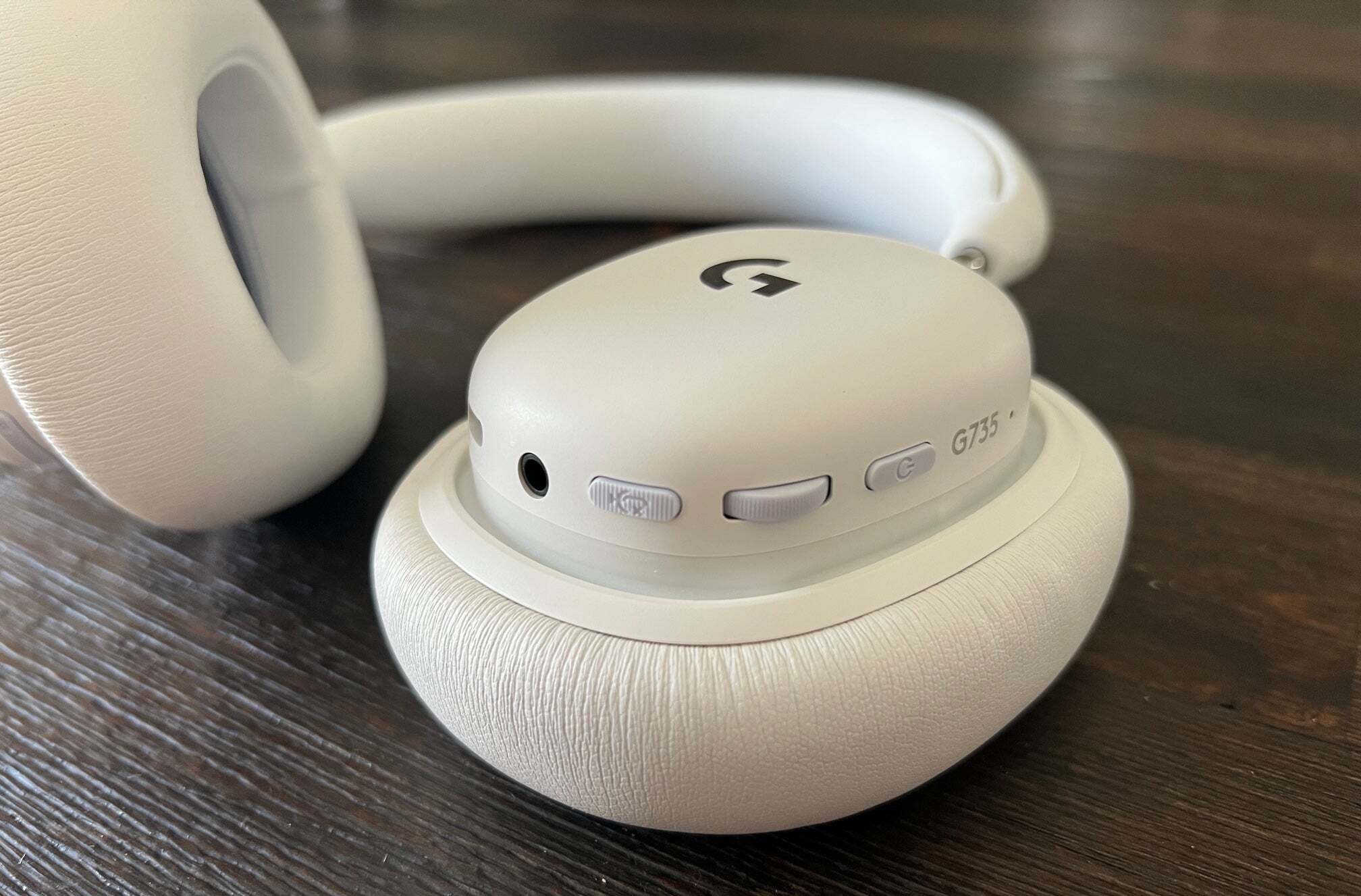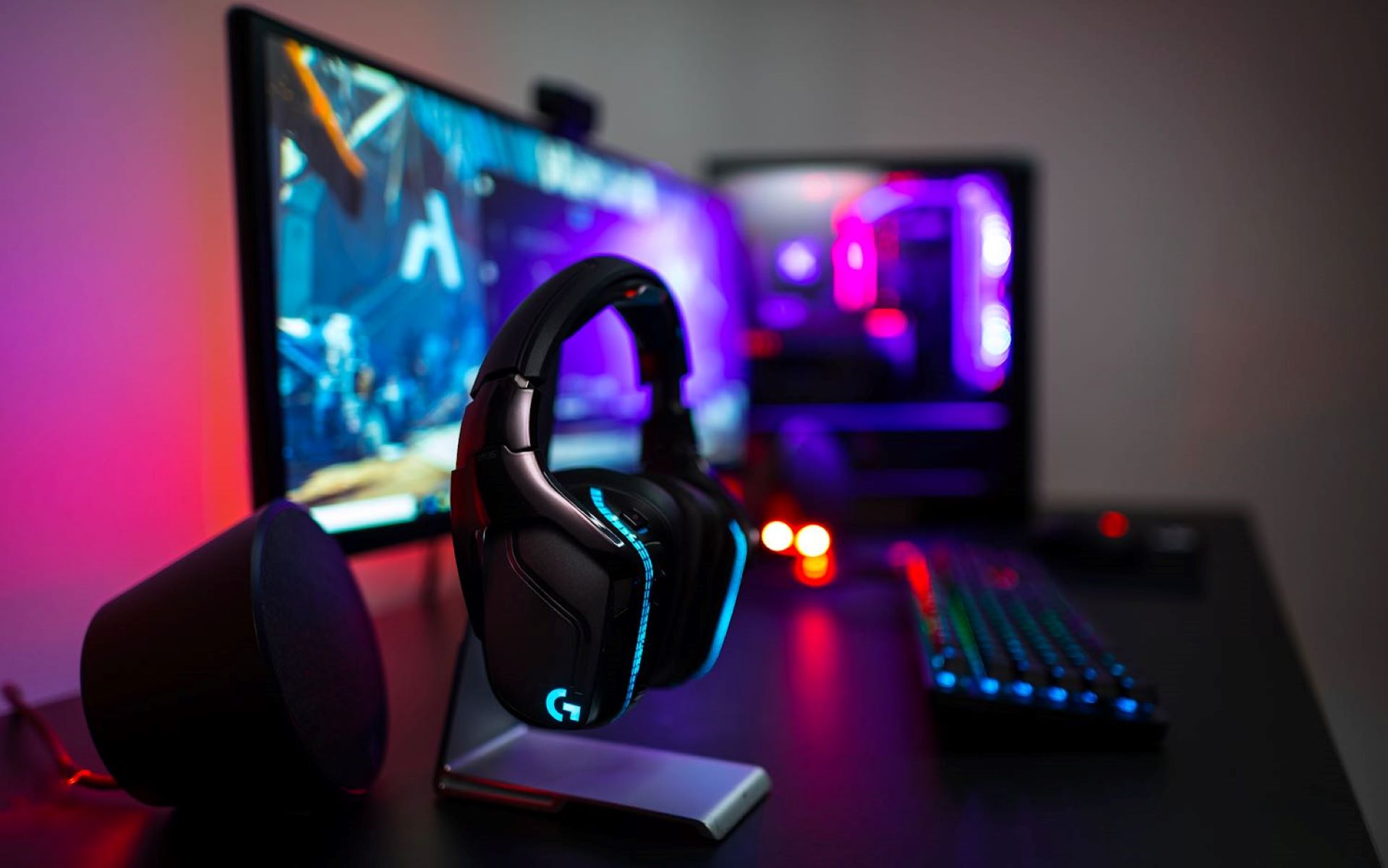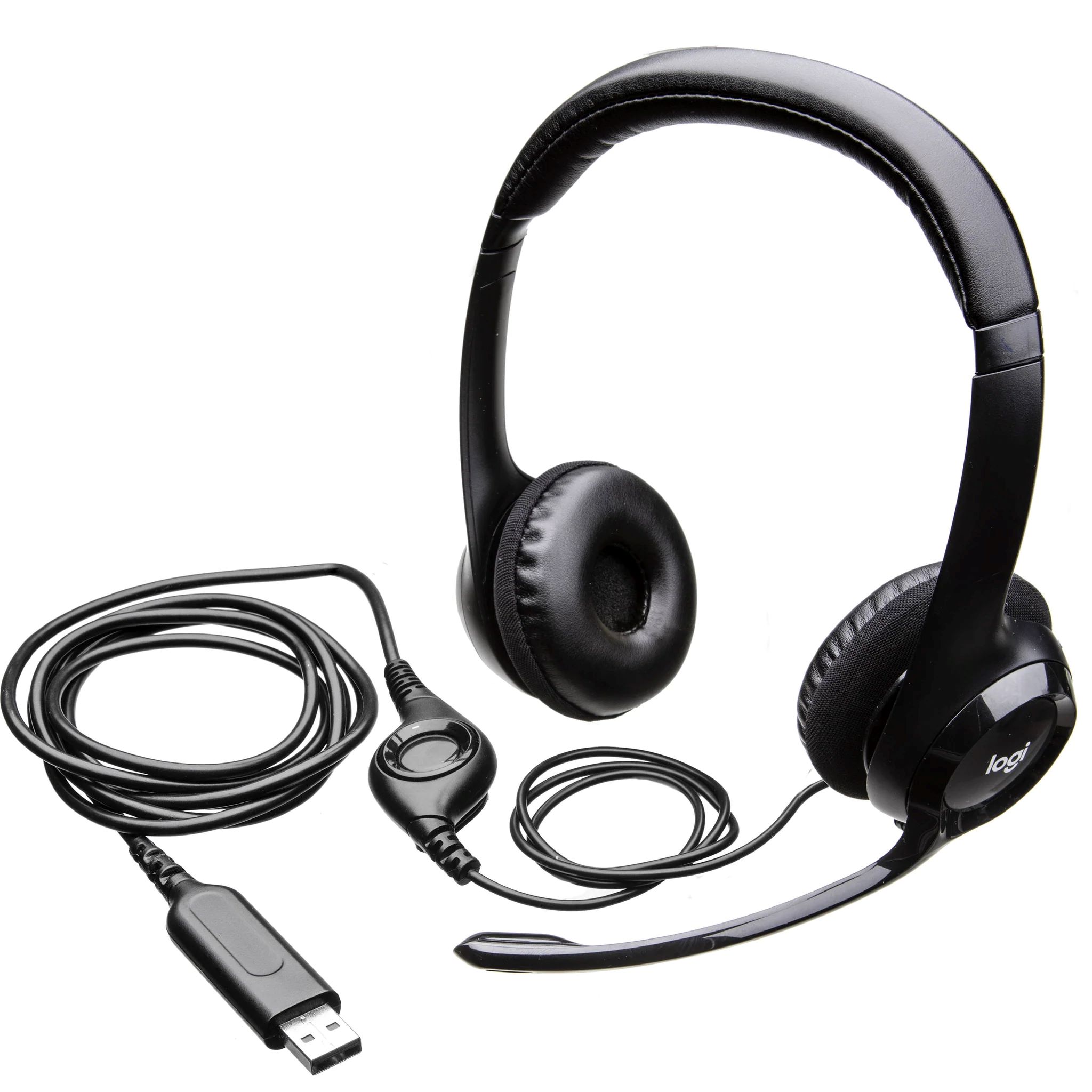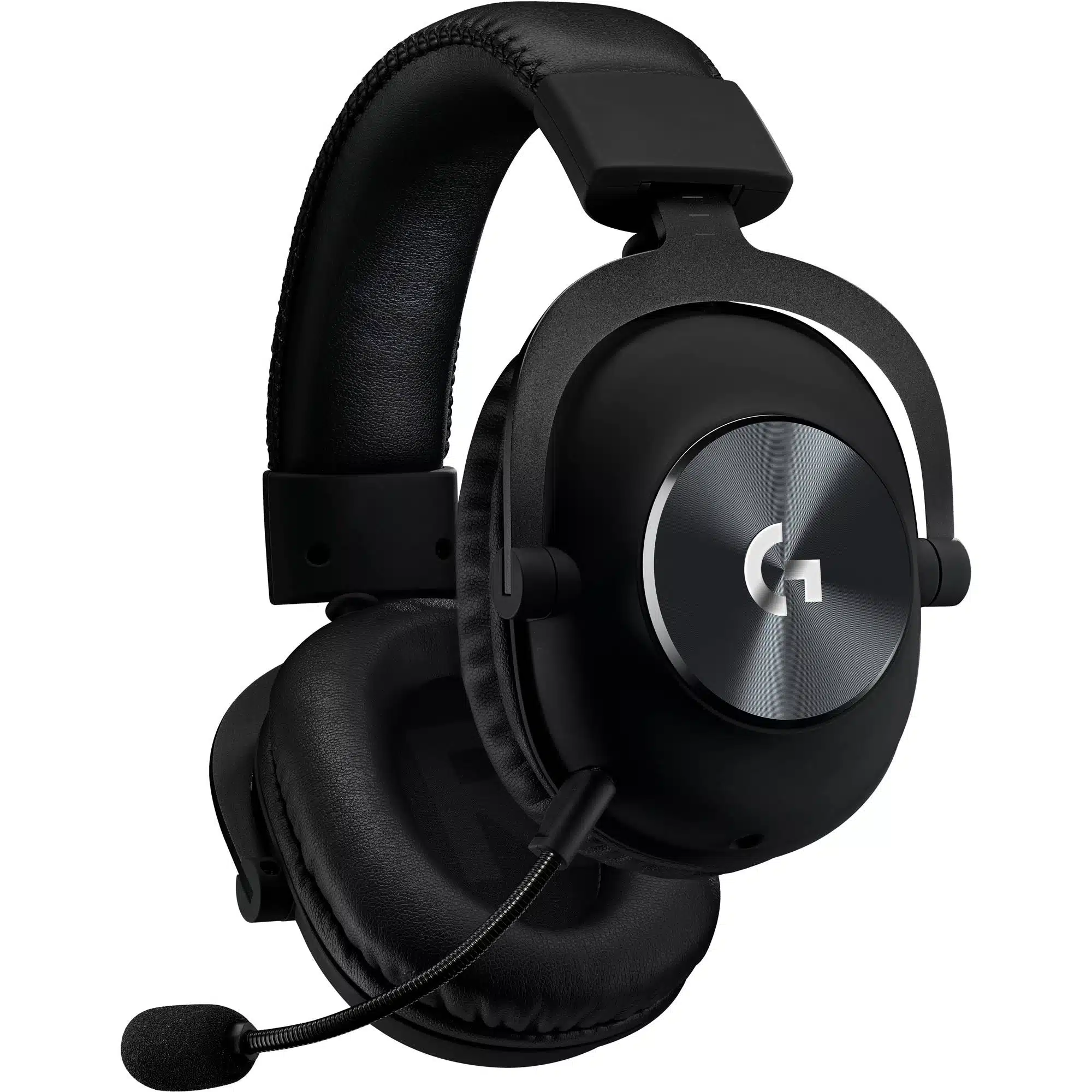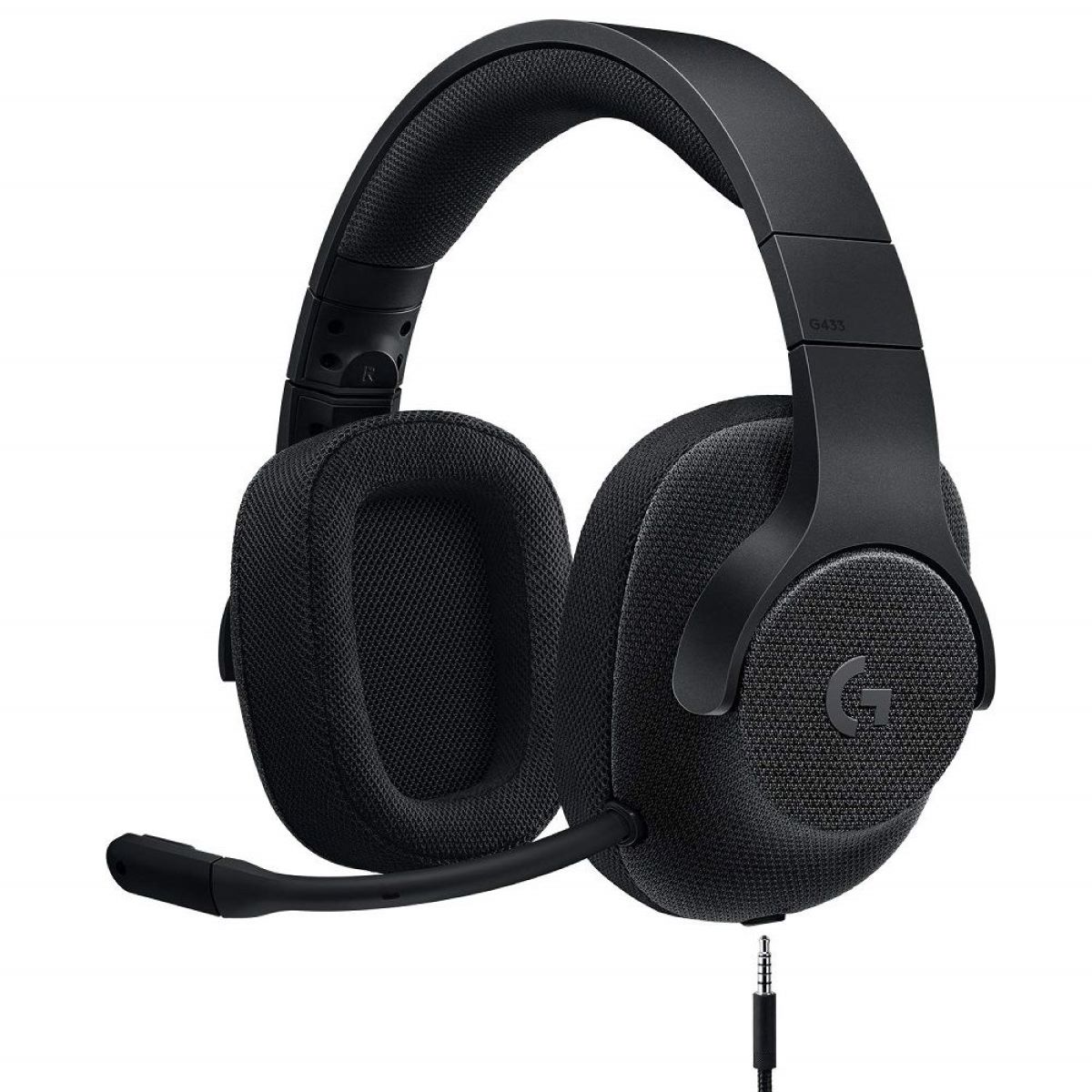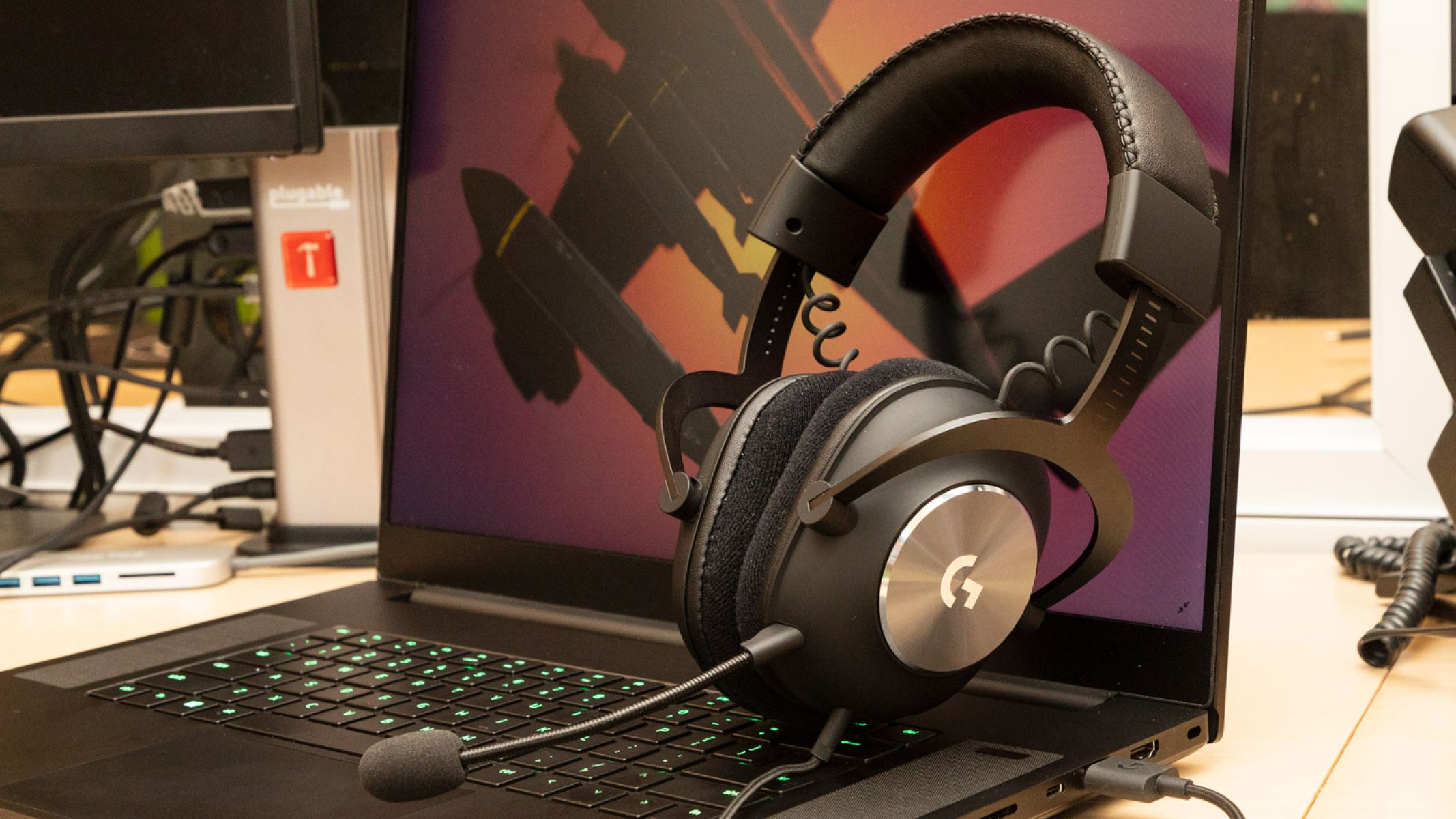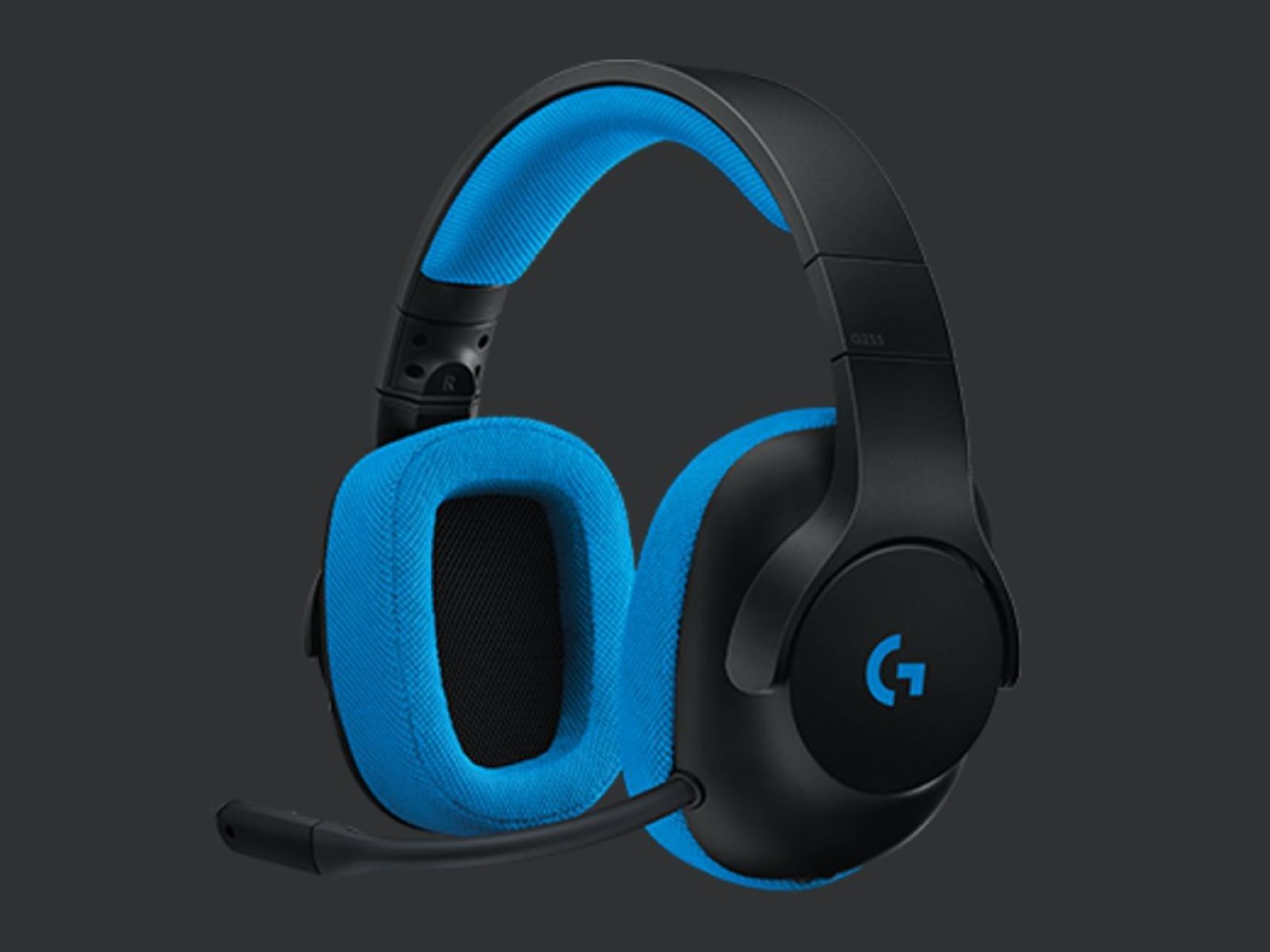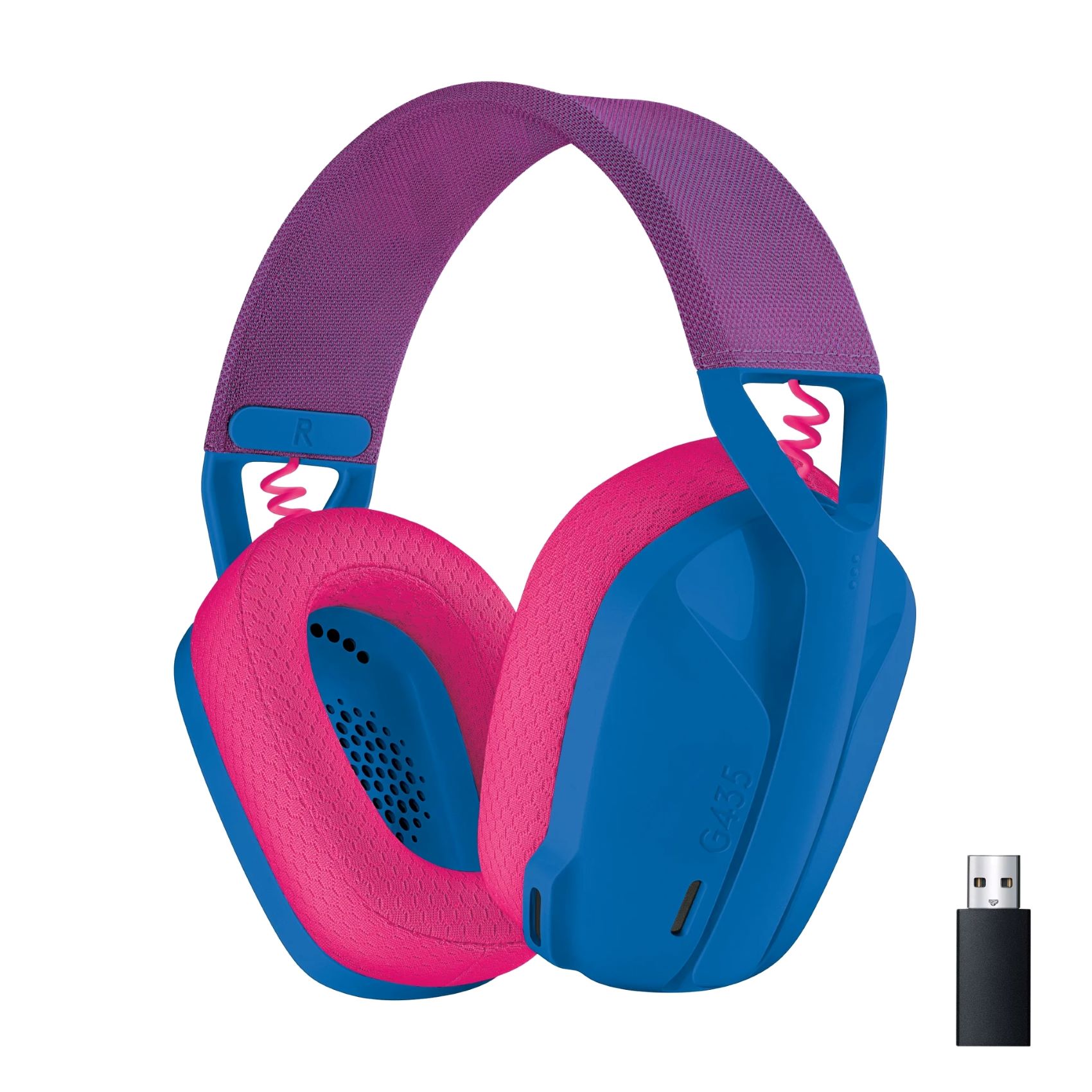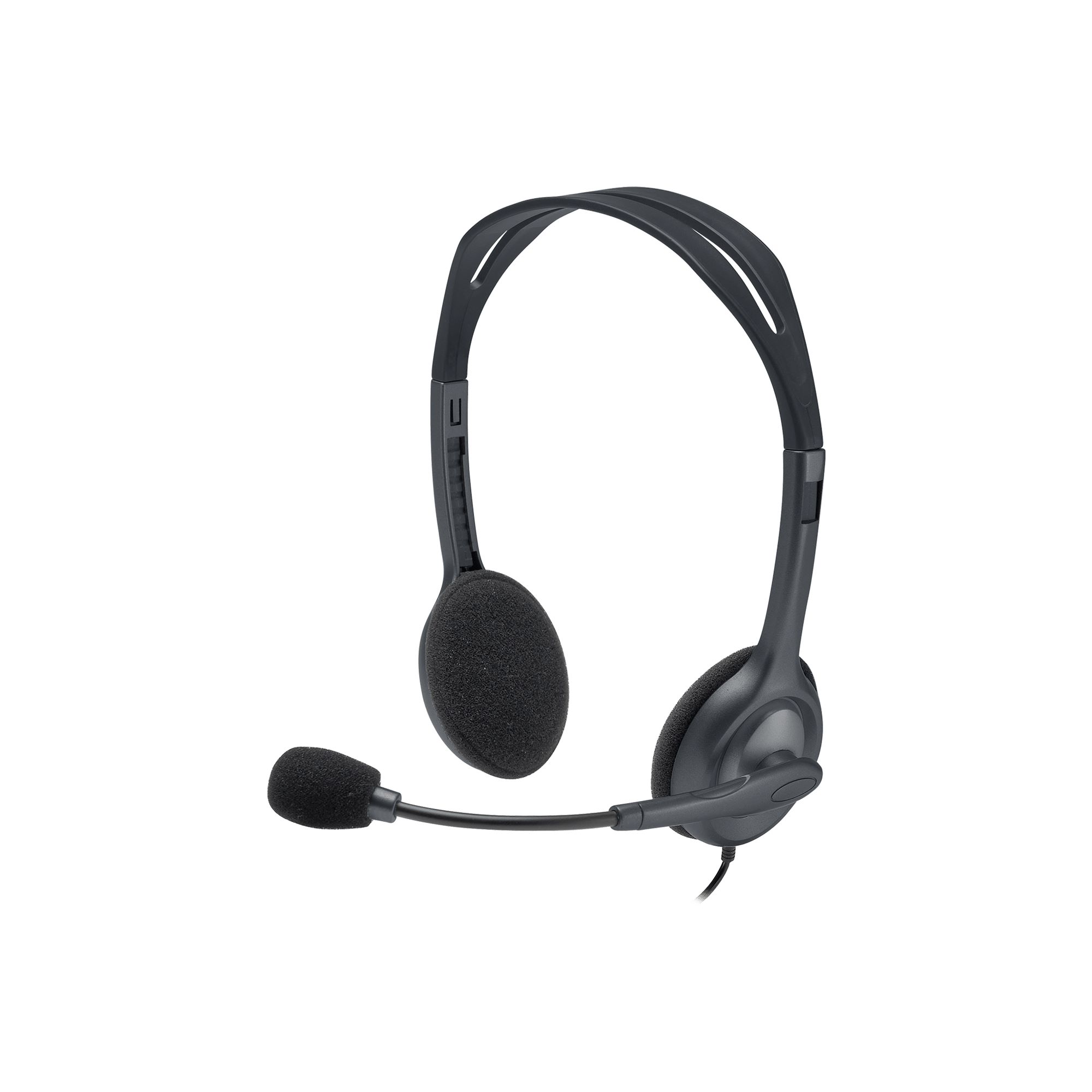Introduction
Have you ever been in a situation where you’re trying to communicate with someone using your Logitech headset, but you’re not sure if it’s muted or not? It can be frustrating when you’re talking, but the other person can’t hear you because your headset is muted. On the other hand, it can be embarrassing if your microphone is not muted and the person on the other end can hear everything happening around you.
When it comes to using a Logitech headset, it’s essential to know how to determine if it’s muted or not. Luckily, Logitech provides various indicators and controls that can help you easily identify whether your headset is muted or not. In this article, we will guide you through the different methods to check if your Logitech headset is muted, ensuring a seamless communication experience.
Whether you’re using your Logitech headset for work, gaming, or simply making calls, knowing how to verify the mute status is crucial. By being aware of the mute status, you can prevent any awkward situations where you unintentionally transmit audio or mute yourself when you need to speak.
In the following sections, we will explore the different ways you can determine if your Logitech headset is muted. We will cover both physical controls on the headset itself and software settings on your computer. Additionally, we will discuss indicators that Logitech headsets often have to inform you about the mute status. So, let’s dive in and uncover the secrets of checking the mute status of your Logitech headset!
Checking the Physical Controls
One of the easiest ways to determine if your Logitech headset is muted is by checking the physical controls on the headset itself. Logitech headsets typically come with dedicated buttons or switches that allow you to control the mute function.
Start by carefully examining the headset for any buttons, sliders, or switches specifically labeled for muting the microphone or adjusting the volume. These controls are usually located on the ear cups or inline with the headset cable. It’s important to note that the physical controls may vary depending on the model of your Logitech headset.
If you spot a designated mute button or switch, gently press or toggle it to verify the mute status. Logitech’s mute buttons are often designed to be easily accessible and are usually marked with a universally recognizable symbol, such as a microphone icon with a line through it when muted. Depending on the headset model, the button may illuminate or change color to indicate the mute status.
Make sure to check if there are any other secondary controls that may affect the mute function, such as volume controls. It’s not uncommon for headsets to have separate buttons for muting the microphone and adjusting the audio volume. Familiarize yourself with all the controls to avoid any confusion.
By examining and utilizing the physical controls on your Logitech headset, you can quickly and confidently determine if the microphone is muted or not. This method is particularly useful if you prefer a tactile approach and want immediate feedback regarding the mute status without having to navigate software settings.
Now that we know how to check the mute status using the physical controls, let’s move on to exploring the software settings in the next section. This will provide an alternative method to verify and manage the mute function of your Logitech headset.
Checking the Software Settings
In addition to the physical controls on your Logitech headset, you can also determine the mute status by checking the software settings on your computer. This method allows for more fine-grained control over the audio settings and is especially useful if your headset doesn’t have dedicated mute buttons or if you prefer managing the mute function through software.
The exact steps to access the software settings may vary depending on your operating system and Logitech headset model. However, the general process remains the same. Here’s how you can check the mute status through the software settings:
- Start by locating the audio settings on your computer. On Windows, you can typically find these settings by right-clicking on the volume icon in the system tray and selecting “Open Sound settings” or “Playback devices.” On Mac, you can access the audio settings from the System Preferences menu under “Sound.”
- Once you have opened the audio settings, look for the input or recording device section. This is where you can manage the settings related to your Logitech headset’s microphone.
- Find the device corresponding to your Logitech headset and click on it to select it. You should see an option to adjust the volume or mute status of the microphone.
- If the mute option is available, make sure it is not selected. If it is selected, click on it to toggle the mute status and unmute the microphone.
Some software settings may also offer additional options, such as adjusting the microphone sensitivity or enabling noise cancellation. These settings allow you to customize the audio experience according to your preferences.
By checking the software settings on your computer, you can easily verify the mute status of your Logitech headset and make any necessary adjustments to ensure clear communication. Remember to save your changes before exiting the settings menu to apply the updated configuration.
Now that we have explored the physical controls and software settings, we have covered the two primary methods to check if your Logitech headset is muted. In the following sections, we will discuss other indicators and methods to confirm the mute status of your headset, as well as troubleshoot common issues that may arise.
Checking for Indicators on the Headset
In addition to the physical controls and software settings, Logitech headsets often come equipped with built-in indicators to provide visual feedback on the mute status. These indicators can be a helpful tool for quickly determining whether your headset is muted or unmuted.
While the specific indicators may vary depending on the model of your Logitech headset, they are typically designed to be easy to spot and understand. Here are some common types of indicators you may find:
- LED lights: Many Logitech headsets feature LED lights that change color or illuminate when the microphone is muted. For example, the LED light may turn red when the microphone is muted and revert to green when it’s unmuted.
- Physical switches: Some Logitech headsets may have physical switches that physically move or change position when the microphone is muted. You can visually inspect these switches to see if they indicate the mute status.
- Icons or labels: Logitech headsets often have clear icons or labels that indicate the mute status. These icons may be etched or printed on the headset itself, near the microphone or on the ear cups.
To determine if your Logitech headset has indicators, carefully examine the headset for any visible signs that provide information about the mute status. Consult the user manual or the Logitech website for your specific headset model if you’re unsure where to locate the indicators.
If there are indicators on your headset, they can serve as a quick and reliable visual confirmation of the mute status. Always check the indicators before starting a call or engaging in any activity that requires microphone use, as it will help you avoid any unintentional sound transmission.
Keep in mind that not all Logitech headsets may have built-in indicators. If your headset doesn’t have any visible indicators, don’t worry. You can still rely on the physical controls and software settings we discussed earlier to determine the mute status accurately.
In the next section, we will explore another essential aspect of ensuring that your Logitech headset is functioning correctly: verifying sound output and microphone input. Stay tuned!
Verifying Sound Output and Microphone Input
In addition to checking the mute status, it’s crucial to ensure that the sound output and microphone input on your Logitech headset are functioning correctly. A properly working headset will not only provide clear audio but also help prevent any issues during communication.
To verify the sound output, put on your Logitech headset and play some audio, such as a YouTube video or a music track. Make sure that you can hear the sound clearly and that it’s coming through the headset speakers. Adjust the volume controls, if necessary, to achieve the desired audio level.
Next, it’s essential to test the microphone input. You can use various methods to do this, depending on your preferences and available resources. Here are a few suggestions:
- Recording app: Open a voice recording app or software on your computer, such as Voice Recorder or Audacity. Start recording your voice and speak into the microphone. Once you’re done, play back the recording and make sure your voice is audible and clear.
- Communication app: Use a communication app like Skype, Zoom, or Microsoft Teams to make a test call. During the call, check if the other person can hear you clearly. You can also ask them for feedback regarding the audio quality and volume.
- Online microphone test: There are various websites available that offer online microphone tests. These tests allow you to speak into your Logitech headset’s microphone and assess the quality of the audio input. TestMyMic.com and MicTest.io are popular options for this purpose.
By regularly verifying the sound output and microphone input, you can ensure that your Logitech headset is providing optimum performance. If you encounter any issues with sound or microphone quality, consider troubleshooting the problem or reaching out to Logitech support for assistance.
Now that we have covered the essential steps to check the mute status and verify the audio quality, let’s move on to the next section, where we will discuss common issues that you may encounter and provide troubleshooting tips to resolve them.
Troubleshooting Common Issues
While Logitech headsets are generally reliable and user-friendly, you may come across some common issues that can affect the functionality of your headset. Here, we outline a few troubleshooting tips to help you resolve these issues and ensure smooth operation.
No sound or microphone: If you’re experiencing no sound or microphone input, start by checking the physical connections. Ensure that your Logitech headset is properly plugged into the correct audio and microphone ports on your computer. You may also try unplugging and reconnecting the headset to ensure a secure connection.
If the physical connections are fine, check the volume levels and mute settings on your computer as well as the headset itself. Make sure that the volume is not set too low or muted in both the system audio settings and any application-specific audio settings.
Poor audio quality: If you’re noticing poor audio quality, first make sure that the microphone is positioned correctly and not obstructed by any obstacles. Adjust the microphone placement to optimize audio capture. Additionally, check for any debris or blockages on the microphone or headset that could be affecting the audio quality. Clean the microphone gently with a soft cloth, if needed.
Another common culprit of poor audio quality is outdated or incompatible audio drivers. Ensure that you have the latest drivers installed for your Logitech headset. Visit the Logitech website or the manufacturer’s support page to download and install the appropriate drivers for your headset model and operating system.
Interference or static noise: If you’re experiencing interference or static noise, first check your surroundings. Ensure that there are no electronic devices, such as mobile phones or routers, placed too close to your Logitech headset. Electromagnetic interference from these devices can disrupt the audio signal.
If the interference persists, try using your Logitech headset with a different device or computer to see if the issue persists. This can help determine if the problem is specific to your computer or if it’s related to the headset itself. Additionally, using the headset in a different location or room can also help identify any environmental factors causing interference.
If none of the troubleshooting tips above resolve the issue, consider reaching out to Logitech’s customer support for further assistance. They have knowledgeable representatives who can guide you through additional steps and provide specific solutions based on your headset model and situation.
With these troubleshooting tips, you should be well-equipped to address common issues and enjoy a seamless experience with your Logitech headset.
Now, we’ve covered the main aspects of checking the mute status, verifying sound output and microphone input, and troubleshooting common issues. In the concluding section, we will recap the key points discussed throughout the article.
Conclusion
Checking the mute status of your Logitech headset is crucial for effective communication and preventing any accidental audio mishaps. Throughout this article, we explored various methods to determine if your Logitech headset is muted, including checking the physical controls, software settings, and built-in indicators.
We discussed how to examine the physical controls on the headset itself, whether it’s dedicated mute buttons, switches, or sliders. We also explored the software settings on your computer, allowing you to manage the mute function through the audio settings. Additionally, we highlighted the importance of looking for indicators on the headset, such as LED lights, physical switches, or labels.
Furthermore, we emphasized the need to verify both sound output and microphone input to ensure optimum performance. By playing audio and testing the microphone through various methods such as recording apps or communication apps, you can ensure clear sound and reliable microphone input.
In case you encounter any issues, we provided troubleshooting tips for common problems such as no sound/microphone, poor audio quality, and interference/static noise. These tips included checking physical connections, adjusting volume settings, updating drivers, and minimizing interference from surrounding devices.
Remember, if the troubleshooting tips don’t resolve the issue, don’t hesitate to contact Logitech customer support for further assistance tailored specifically to your headset model and situation.
By following the methods outlined in this article and being mindful of the mute status and overall functionality of your Logitech headset, you can enhance your communication experience and avoid any unexpected audio disturbances.
Now that you’re equipped with the knowledge and tools to check if your Logitech headset is muted, go ahead and ensure a seamless communication experience with confidence!







